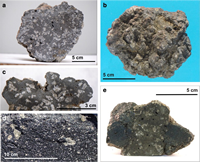SO2 emissions at Semeru volcano, Indonesia: Characterization and quantification of persistent and periodic explosive activity
Smekens J.-F., A.B. Clarke, M.R. Burton, A. Harijoko, H.E. Wibowo (2015).
Journal of Volcanology and Geothermal Research, Volume 300, Pages 121-128, doi:10.1016/j.jvolgeores.2015.01.006.
Abstract
We present the first measurements of SO2 emissions at Semeru volcano, Indonesia, using an SO2 camera. Activity at Semeru is characterized by quiescent degassing interspersed with short-lived explosive events with low ash burden. The interval between explosions was measured at 32.1 ± 15.7 min in a webcam survey of the volcano between the months of June and December 2013. We distinguish between two types of events: shorter events (type I: ~ 5 min duration) with emissions returning quickly to baseline levels, and longer events (type II: ~ 15 min duration) often showing multiple pulses and a longer period of increased emissions before a return to quiescent levels. Type I events represent > 90% of the activity and release an average of 200–500 kg of SO2 per event. The single type II event we documented with the SO2 camera released a total of 1460 kg of SO2. We estimate the daily average emissions of Semeru to be 21–71 t d− 1 of SO2, amounting to a yearly output of 8–26 Gg (8000–26,000 metric tons), with 35–65% released during explosive events. The time series patterns of degassing are consistent with the existence of a viscous plug at the top of the conduit, which seals the conduit immediately prior to explosive events, causing pressurization of the underlying magma followed by a sudden release of gas and fragmented magma.
http://www.sciencedirect.com/science/article/pii/S0377027315000219


